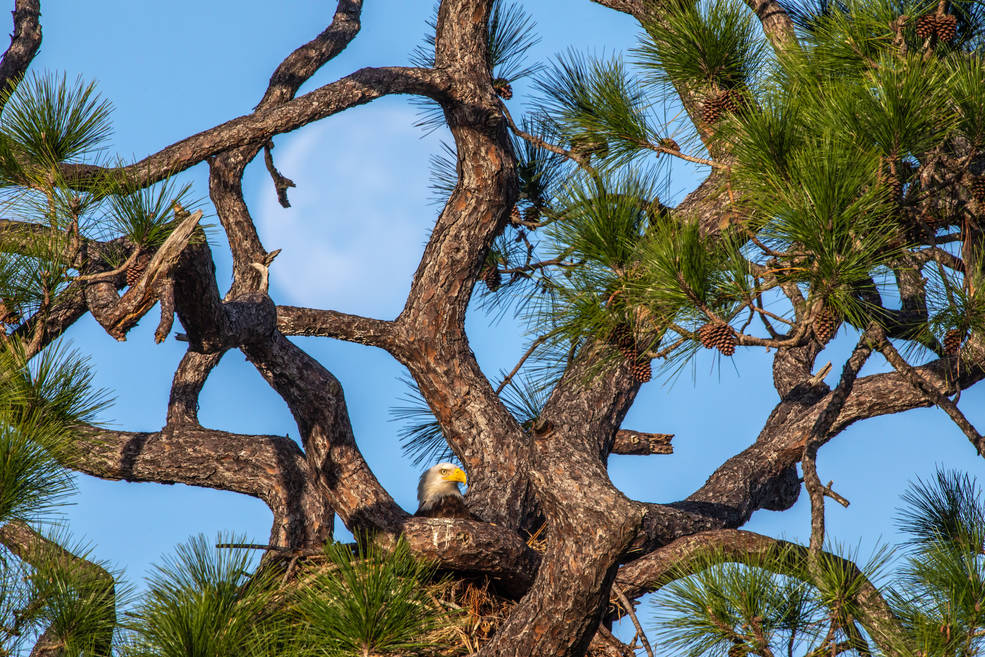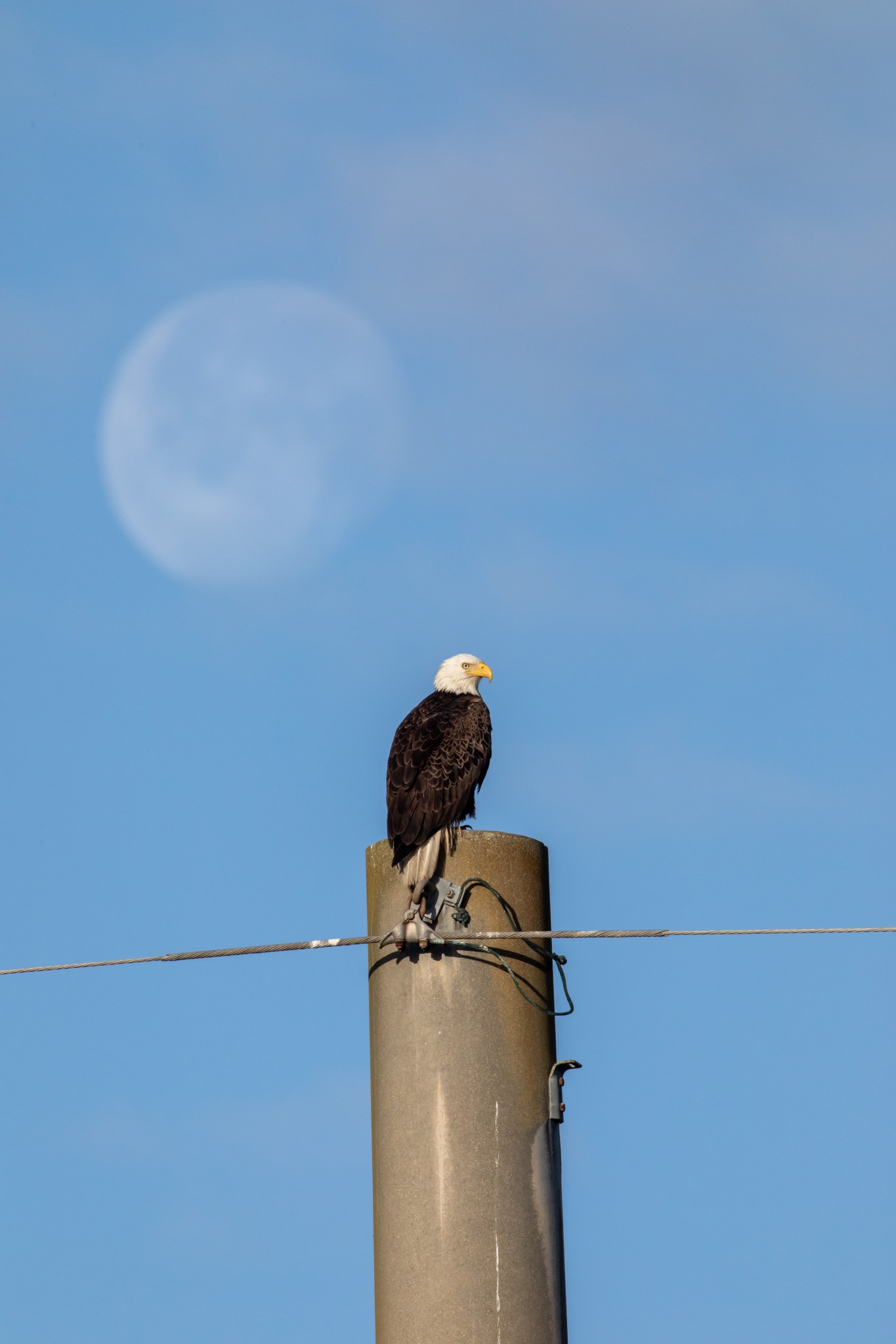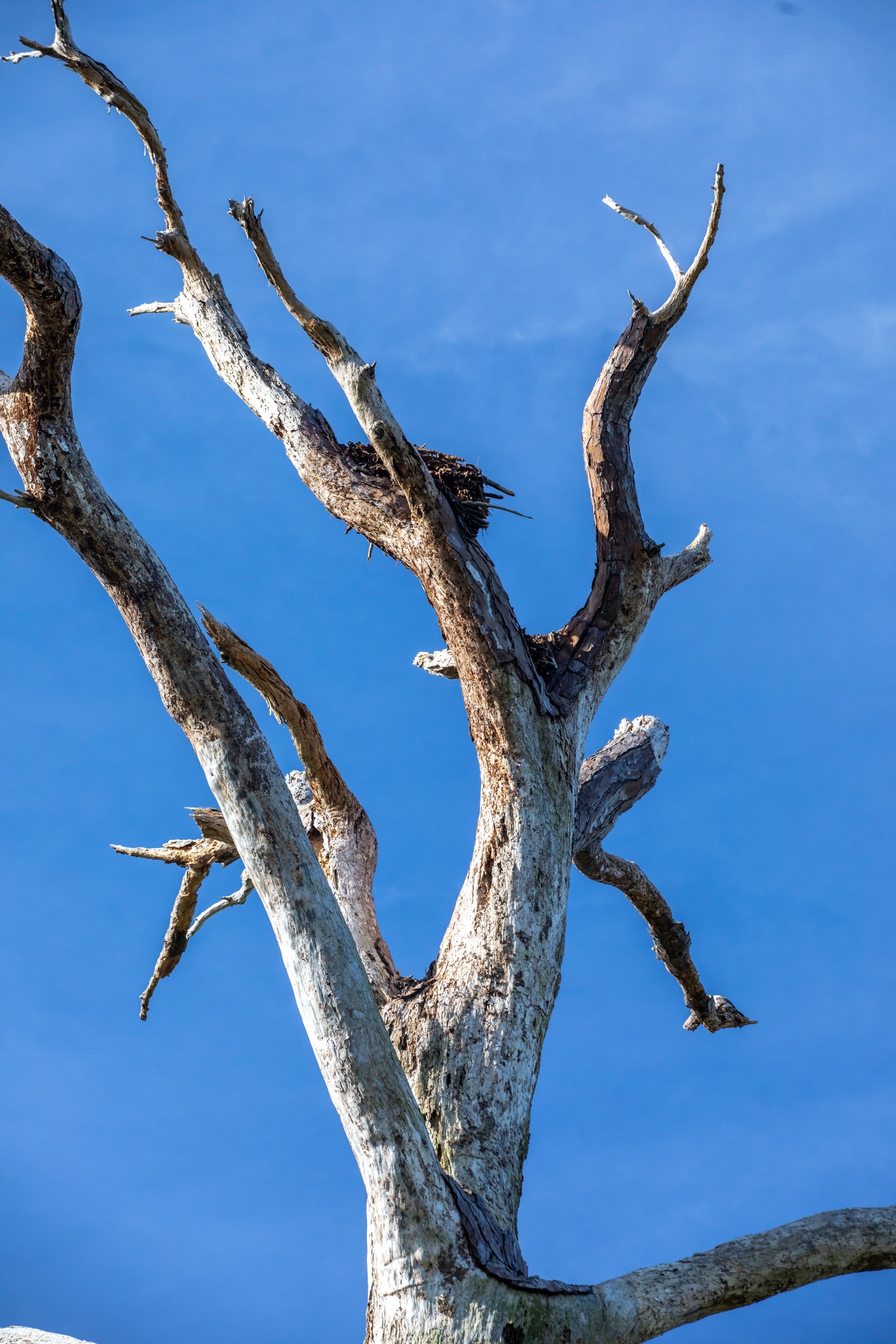
*Editor’s note: Kennedy’s most prominent pair of eagles are proud parents again! Click here for a photo and update on the Florida spaceport’s new fuzzy friend.
By Jim Cawley
NASA’s Kennedy Space Center
The most famous pair of American bald eagles at NASA’s Kennedy Space Center have returned to their prominent position at the Florida spaceport – nestled in a tree along Kennedy Parkway, just a couple miles south of the Vehicle Assembly Building.
No, it’s not the same nest – or even the same tree – that thousands of Kennedy employees and visitors have come to know over the decades. Located within 100 yards of the previous nest, the eagles’ new home is closer to Kennedy Parkway, providing an opportunity for even more passers-by to view the majestic birds in their natural habitat.
Storms during the non-nesting season (roughly April through August of 2021) badly damaged the original nest, which was built in 1973 and was used almost every year from 1975 until 2022. However, late last year, the eagles were spotted nearby carrying nesting material to the new location. The pair returned a few months ago, completing and moving into their brand new home.
“You always wonder where they’re going to rebuild. And the cool thing is they built it closer to the road, which creates more wildlife activity for people to see up close,” said Russell Lowers, a wildlife biologist with 32 years of experience at Kennedy. “That’s why I’m so excited – because they actually rebuilt the nest closer to viewing by the general public.”
A combination of storms and pine bark beetles killed the original tree about five years ago. But the eagles continued to use the dead tree, a behavior that isn’t uncommon, Lowers explained. That’s until storm winds collapsed about half of the nest off the back side of the tree. That apparently was the last straw – or stick – for the eagles, who chose to set up their new accommodations.
Typically, eagles do not build within a mile of another eagle’s nest, Lowers said, making it a safe assumption that it is the same mating pair returning year after year. Since eagles have an average lifespan of 20-25 years, and the original nest was nearly 50 years old, these two haven’t been spending winters at Kennedy since the 1970s. Of course, the current eagle pair could be from the same family “tree.”
Their timing is pretty good, too. Biologists and scientists noted the eagles were first spotted at Kennedy within a day of the previous year’s arrival – for the past eight years running.
“It’s like a contest,” Lowers joked.
For nearly 20 years, Lowers and Senior Geographic Information Systems Analyst Resa Cancro have been monitoring this territory, as well as several other territories throughout Kennedy, in helicopters flown by NASA pilots. According to the most recent survey, Kennedy currently is home to 39 eagle territories, 33 of which are active or potentially active. Records from the early 1990s were less than a third of these numbers.
“These numbers represent recovery of a population,” said Chief Scientist and Wildlife Biologist Dave Breininger.
During the most recent helicopter flight, an eagle from Kennedy’s famous duo was seen sitting in the new nest, though it is not yet known whether she was incubating eggs. Another flight is scheduled later this month in hopes of making that determination.
Documentation during flights includes nest occupation, how many eaglets are produced, and fledging from the nest. Eagles incubate their eggs for about 35 days on average, then fledge at eight to 14 weeks of age. They are generally seen on center from about September to March. Most Florida eagles summer near the Chesapeake Bay or in the coastal plain of North Carolina from April to August.
“I have worked out here since 1984 and I will still slow down and look; honestly, it gives me chills,” Cancro said. “I don’t see how anybody cannot just be in awe. They’re just so majestic. Every day … even the five-millionth time, I still stop.”
Motorists also should stop – or at least slow down – if they spot wildlife too close to the road. Young eagles are still gaining experience and the adult ones can be a bit stubborn, Breininger said.
“They’re often eating road carcasses,” Breininger said. “Sub-adults are vulnerable to increased road mortality and adult eagles sometimes have no desire to move out of the way. Unlike some birds, they’re pretty bold.”
To report a wildlife incident, call the Kennedy Duty Office at (321) 861-5050. Click here for more information on eagles at the center and Merritt Island National Wildlife Refuge.































